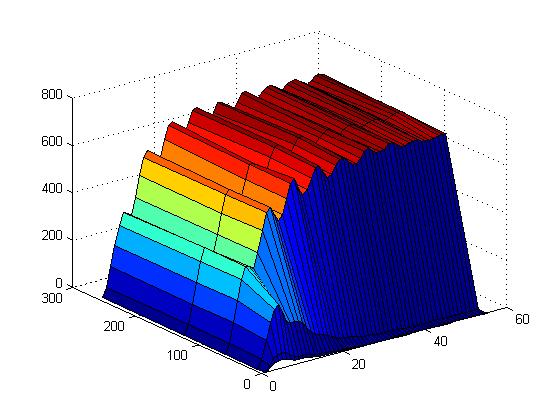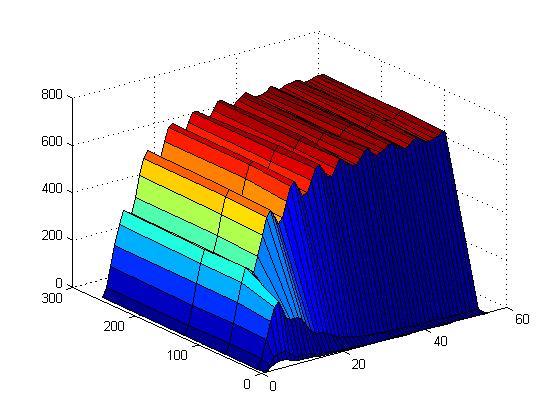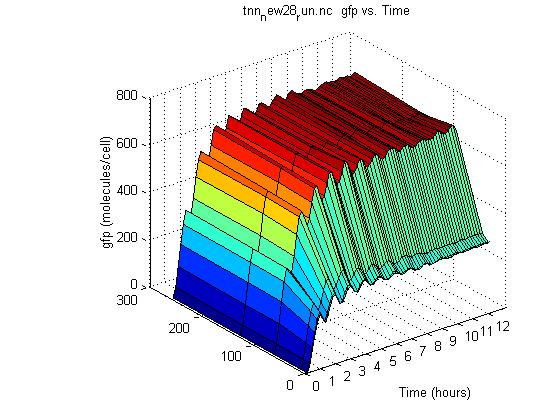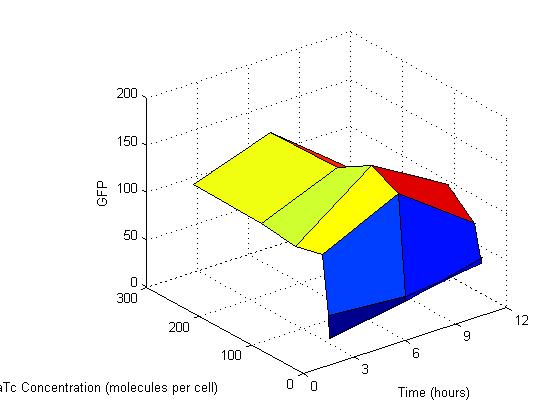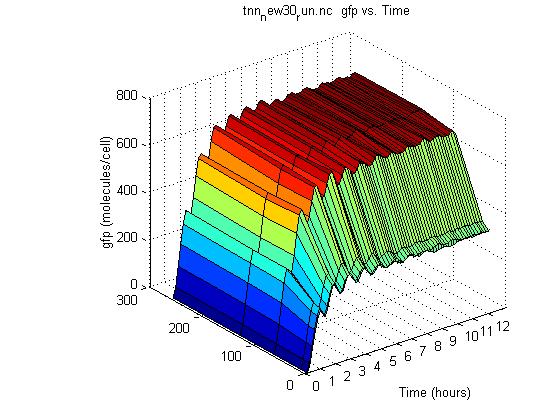Minnesota/24 July 2009
From 2009.igem.org
| Line 5: | Line 5: | ||
|'''[[Minnesota/23 July 2009|Go to Previous Day (July 23)]]'''|| width=158|'''[[Minnesota/27 July 2009|Go to Next Day (July 27)]]''' | |'''[[Minnesota/23 July 2009|Go to Previous Day (July 23)]]'''|| width=158|'''[[Minnesota/27 July 2009|Go to Next Day (July 27)]]''' | ||
|} | |} | ||
| - | <br> | + | '''Patrick'''<br> |
| + | Got back test4, and also created three new programs. Yesterday I submitted two models, the reduction of tetR2's affinity to aTc (reactions 11 and 13) by one (test4) and two (test5) orders of magnitude to see how that affected the model. The base model is also given for comparison: | ||
| + | |||
| + | <center><gallery widths=300 heights=200> | ||
| + | Image:base.jpg|Figure 1 - Base TTN Model | ||
| + | Image:test4.jpg|Figure 2 - Reduced Kinetic Constant for Reaction 11 and 13, One Order of Magnitude | ||
| + | Image:test5.jpg|Figure 3 - Reduced Kinetic constant for Reaction 11 and 13, two Orders of Magnitude | ||
| + | </gallery></center><br> | ||
| + | |||
| + | As can be seen the results were disappointing. ATc still out-competes everything else at high aTc concentrations it seems.<br> | ||
| + | |||
| + | The new models created were called '''smad_ttn_test6''' which took the above idea to the extreme. In order to see how aTc really affected the model, I decided to make sure cutting it out entirely came out with a logical graph. So reaction 11 and 13 kinetic constants were set to zero.<br> | ||
| + | |||
| + | The two other models were '''smad_ttn_test7''' and '''smad_ttn_test8'''. These were made to solve the problem with the non-diluting tetR2:aTc and tetR2:aTc2 complexes. In this case I eliminated tetR2:aTc and tetR2:aTc2 by changing any reaction containing those species to instead result in tetR2 and aTc. This would allow tetR2 to more accurately divide (although it would sacrifice some accuracy as well, since these complexes do in fact exist). Test8 is similar, but it also checked to see how increasing the decomposition of tetR2 (reaction 35, k=2.89E-04 1/s, increase to k=2.89E-03) would affect this modified model.<br> | ||
| + | |||
| + | |||
| + | '''Ben'''<br> | ||
[[Image:Tnnnew28.jpg|480px]][[Image:Tnnexperiment.jpg|480px]]<br> | [[Image:Tnnnew28.jpg|480px]][[Image:Tnnexperiment.jpg|480px]]<br> | ||
<br> | <br> | ||
[[Image:Tnnnew30.jpg|480px]][[Image:Tnnexperiment.jpg|480px]]<br> | [[Image:Tnnnew30.jpg|480px]][[Image:Tnnexperiment.jpg|480px]]<br> | ||
Revision as of 20:21, 30 July 2009
| Back to Notebook Home | |
| Go to Previous Day (July 23) | Go to Next Day (July 27) |
Patrick
Got back test4, and also created three new programs. Yesterday I submitted two models, the reduction of tetR2's affinity to aTc (reactions 11 and 13) by one (test4) and two (test5) orders of magnitude to see how that affected the model. The base model is also given for comparison:
As can be seen the results were disappointing. ATc still out-competes everything else at high aTc concentrations it seems.
The new models created were called smad_ttn_test6 which took the above idea to the extreme. In order to see how aTc really affected the model, I decided to make sure cutting it out entirely came out with a logical graph. So reaction 11 and 13 kinetic constants were set to zero.
The two other models were smad_ttn_test7 and smad_ttn_test8. These were made to solve the problem with the non-diluting tetR2:aTc and tetR2:aTc2 complexes. In this case I eliminated tetR2:aTc and tetR2:aTc2 by changing any reaction containing those species to instead result in tetR2 and aTc. This would allow tetR2 to more accurately divide (although it would sacrifice some accuracy as well, since these complexes do in fact exist). Test8 is similar, but it also checked to see how increasing the decomposition of tetR2 (reaction 35, k=2.89E-04 1/s, increase to k=2.89E-03) would affect this modified model.
 "
"

